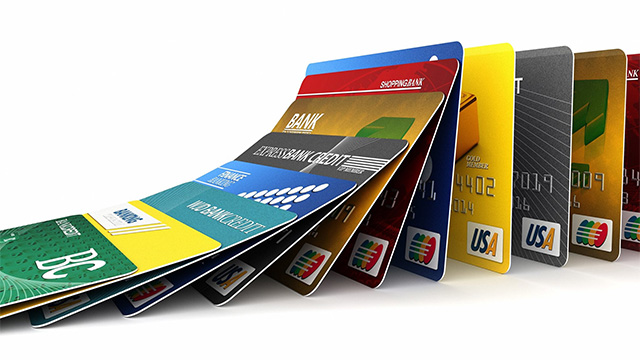
Your plan will determine whether you are successful or unsuccessful while trying to pay off debt. If you don’t have one, you’re doomed to failure. Those that have formed a debt payback plan, on the other hand, know precisely how much additional money they can put towards their obligations and which bill is at the top of their priority list. Your strategy will inspire you and increase your chances of being debt-free as soon as possible.
The debt avalanche strategy prioritizes paying off your highest-interest loans first to save money and time on your route to debt freedom. This strategy is not for everyone, but its simplicity has made it one of the most popular methods for achieving financial independence.
In this post, we’ll outline the debt avalanche approach and demonstrate how it may help you get out of debt rapidly.
What Exactly Is a Debt Avalanche?
An avalanche debt payback plan is a form of expedited debt repayment arrangement. Essentially, a debtor sets aside enough money to make the minimum payment on each kind of debt, then applies any leftover repayment funds to the loan with the highest interest rate. Once the debt with the highest interest rate is completely paid off, the additional repayment amounts are applied to the next-highest interest-bearing loan. This procedure will continue until all debts have been paid off.
How to Apply the Debt Avalanche Technique
With a few easy steps, you may begin using the debt avalanche strategy.
List Your Debts in Order of Interest Rate
Make a list of all your debts, including the total sums, monthly payments, and interest rates. Credit cards, personal loans, vehicle loans, school loans, and medical costs are examples.
Sort the list by the interest rates on the debts, highest to lowest. It may be simpler to adjust the numbers later if you use a spreadsheet.
Sort the List by Highest-Interest Debt First
Arrange the debts in ascending order from highest to lowest interest rate. You will then prioritize paying off the loan with the highest interest rate first. For example, if you took payday loans no credit check instant approval and it has a 30% interest rate and a car loan with an 8% interest rate, then you will pay out payday loans first, and then the car loan.
Continue making the minimum payments on all of your loans, but give the one with the highest interest rate first priority. You continue until you have paid back everything on the last item on the list. Only the amount you pay toward the obligation at the top of your list will change throughout the course of your payback period.
Keep Going Till Your Debt is Gone
It could take some time before you begin to feel like you are progressing. Particularly if the loan with the highest interest rate also has a large amount. But don’t despair; the math is on your side.
After you have paid off your first loan, apply your whole monthly payment to your next bill. Sometimes people use the best money borrowing apps to pay off another loan and start paying off a new one with better terms. You can implement this in the avalanche repayment method as well.

The Benefits of the Debt Avalanche
As long as you follow to the plan, the debt avalanche technique of debt payback reduces the amount of interest you pay while working toward your debt-free objective. It also shortens the time it takes to pay off debt (assuming continuous payments) since less interest accumulates.
Because lenders utilize compound interest rates, interest is added to these obligations. Compound interest accumulates at a rate dictated by the frequency of compounding, with the number of compounding periods increasing as the number of compounding periods decreases. Most credit card balances compound interest on a daily basis, while certain loans compound interest monthly, semi-annually, or yearly.
The Debt Avalanche’s Disadvantages
The debt avalanche is a tactic that requires discipline and dedication to execute, which may be a significant drawback for some. Even if you have the greatest intentions of staying with the debt-avalanche strategy, it is easy to fall back into paying minimum payments on all of your bills, particularly if you have unplanned needs such as a vehicle or house repairs. That’s why most financial advisors advise consumers to set up a six-month emergency fund before embarking on any expedited debt repayment plan.
Debt Avalanche Versus Debt Snowball
A debt avalanche is a fantastic method for cutting expenditures and getting out of debt, but it may not be appropriate for everyone. The debt snowball strategy is another possibility.
With this technique, you’ll pay off your bills in ascending order of size, from least to greatest. The concept behind the debt snowball technique is that little victories early on keep you motivated to adhere to your debt-reduction strategy, but this method may wind up costing you more in total interest eventually.
If you’re prone to losing motivation along your debt-reduction journey, a debt snowball technique could be a better solution. Early in the process, the approach gives modest successes that might help you remain disciplined. It has the potential to keep optimism alive. You must believe that it is advisable to use the debt avalanche technique to pay off high-interest debts initially. Paying down debt may take a long time.
It is Not For Everyone
The debt avalanche approach of debt reduction is not for everyone. For example, it needs a lot of discipline to see it through, as well as adequate money for everyday living costs and an emergency fund. A debt avalanche, on the other hand, maybe an excellent strategy to get out of debt very inexpensively and quickly for people who can stick with it.
Does the Avalanche Approach Suit You?

Although avalanche may be the cheapest and most obvious path to debt freedom, you may have to wait a long time to experience the joy of debt freedom, particularly if your highest-interest loan is also the biggest.
You can create a spreadsheet to monitor your progress, but a debt payback calculator, such as the one above, can automate all of those stages for you. It also provides the emotional pleasure of seeing your debt diminish.
That is significant. If you become tired of making sacrifices to pay off debt, you may believe it’s not worth the effort and stop. If you do this, all of the money you were intending to save will be lost.

Comments are closed.